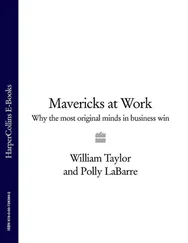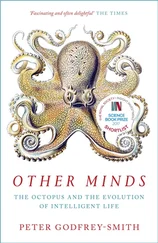Peter Seibel - Coders at Work - Reflections on the craft of programming
Здесь есть возможность читать онлайн «Peter Seibel - Coders at Work - Reflections on the craft of programming» весь текст электронной книги совершенно бесплатно (целиком полную версию без сокращений). В некоторых случаях можно слушать аудио, скачать через торрент в формате fb2 и присутствует краткое содержание. Жанр: Программирование, на английском языке. Описание произведения, (предисловие) а так же отзывы посетителей доступны на портале библиотеки ЛибКат.
- Название:Coders at Work: Reflections on the craft of programming
- Автор:
- Жанр:
- Год:неизвестен
- ISBN:нет данных
- Рейтинг книги:3 / 5. Голосов: 1
-
Избранное:Добавить в избранное
- Отзывы:
-
Ваша оценка:
- 60
- 1
- 2
- 3
- 4
- 5
Coders at Work: Reflections on the craft of programming: краткое содержание, описание и аннотация
Предлагаем к чтению аннотацию, описание, краткое содержание или предисловие (зависит от того, что написал сам автор книги «Coders at Work: Reflections on the craft of programming»). Если вы не нашли необходимую информацию о книге — напишите в комментариях, мы постараемся отыскать её.
Coders at Work
Founders at Work
Coders at Work: Reflections on the craft of programming — читать онлайн бесплатно полную книгу (весь текст) целиком
Ниже представлен текст книги, разбитый по страницам. Система сохранения места последней прочитанной страницы, позволяет с удобством читать онлайн бесплатно книгу «Coders at Work: Reflections on the craft of programming», без необходимости каждый раз заново искать на чём Вы остановились. Поставьте закладку, и сможете в любой момент перейти на страницу, на которой закончили чтение.
Интервал:
Закладка:
Seibel:What is the thing that you worked on that you were most proud of.
Zawinski:Really just the fact that we shipped it. The whole thing. I was very focused on my part, which was the user interface of the Unix front end. But really just that we shipped the thing at all and that people liked it. People converted immediately from NCSA Mosaic and were like, “Wow, this is the greatest thing ever.” We had the button for the What’s Cool page up in the toolbar and got to show the world these crazy web sites people had put up already. I mean, there were probably almost 200 of them! It’s not so much that I was proud of the code; just that it was done. In a lot of ways the code wasn’t very good because it was done very fast. But it got the job done. We shipped—that was the bottom line.
That first night when we put up the .96 beta, we were all sitting around the room watching the downloads with sound triggers hooked up to it—that was amazing. A month later two million people were running software I’d written. It was unbelievable. That definitely made it all worthwhile—that we’d had an impact on people’s lives; that their day was more fun or more pleasant or easier because of the work we’d done.
Seibel:After this relentless pace, at some point that has to start to catch up with you in terms of the quality of the code. How did you guys deal with that?
Zawinski:Well, the way we dealt with that was badly. There’s never a time to start over and rewrite it. And it’s never a good idea to start over and rewrite it.
Seibel:At some point you also worked on the mail reader, right?
Zawinski:In 2.0 Marc comes into my cubicle and says, “We need a mail reader.” And I’m like, “OK, that sounds cool. I’ve worked on mail readers before.” I was living in Berkeley and basically I didn’t come into the office for a couple weeks. I was spending the whole time sitting in cafes doodling, trying to figure out what I wanted in a mail reader. Making lists, crossing it off, trying to decide how long it would take me. What should the UI look like?
Then I came back and started coding. And then Marc comes in again and says, “Oh, so we hired this other guy who’s done mail stuff before. You guys should work together.” It’s this guy Terry Weissman, who was just fantastic—we worked together so well. And it was a completely different dynamic than it had been in the early days with the rest of the browser team.
We didn’t yell at each other at all. And the way we divided up labor, I can’t imagine how it possibly worked or could ever work for anyone. I had the basic design done and I’d started doing a little coding and every day or every couple of days we’d look at the list of features and I’d go, “Uhhh, maybe I’ll work on that,” and he’d go, “OK, I’ll work on that,” and then we’d go away.
Check-ins would happen and then we’d come back and he’d say, “Alright, I’m done with that, what are you doing?” “Uh, I’m working on this.” “OK, well, I’ll start on that then.” And we just sort of divided up the pieces. It worked out really well.
We had disagreements—I thought we had to toss filtering into folders because we just didn’t have time to do it right. And he was like, “No, no, I really think we ought to do that.” And I was like, “We don’t have time!” So he wrote it that night.
The other thing was, Terry and I rarely saw each other because he lived in Santa Cruz and I lived in Berkeley. We were about the same distance from work in opposite directions and because the two of us were the only two who ever needed to communicate, we were just like, “I won’t make you come in if you don’t make me come in.” “Deal!”
Seibel:Did you guys email a lot?
Zawinski:Yeah, constant email. This was before instant messaging—these days it probably all would have been IM because we were sending one-liner emails constantly. And we talked on the phone.
So we shipped 2.0 with the mail reader and it was well-received. Then we’re working on 2.1, which is the version of the mail reader that I’m starting to consider done—this is the one with all the stuff that we couldn’t ship the first time around. Terry and I are halfway through doing that and Marc comes in and says, “So we’re buying this company. And they make a mail-reader thing that’s kind of like what you guys did.” I’m like, “Oh. OK. Well, we have one of those.” And he says, “Well, yeah, but we’re growing really fast and it’s really hard to hire good people and sometimes the way you hire good people is you just acquire another company because then they’ve already been vetted for you.” “OK. What are these people going to be working on?” “They’re going to be working on your project.” “OK, that kind of sucks—I’m going to go work on something else.”
So basically they acquired this company, Collabra, and hired this whole management structure above me and Terry. Collabra has a product that they had shipped that was similar to what we had done in a lot of ways except it was Windows-only and it had utterly failed in the marketplace.
Then they won the start-up lottery and they got acquired by Netscape. And, basically, Netscape turned over the reins of the company to this company. So rather than just taking over the mail reader they ended up taking over the entire client division. Terry and I had been working on Netscape 2.1 when the Collabra acquisition happened and then the rewrite started. Then clearly their Netscape 3.0 was going to be extremely late and our 2.1 turned into 3.0 because it was time to ship something and we needed it to be a major version. So the 3.0 that they had begun working on became 4.0 which, as you know, is one of the biggest software disasters there has ever been. It basically killed the company. It took a long time to die, but that was it: the rewrite helmed by this company we’d acquired, who’d never accomplished much of anything, who disregarded all of our work and all of our success, went straight into second-system syndrome and brought us down.
They thought just by virtue of being here, they were bound for glory doing it their way. But when they were doing it their way, at their company, they failed. So when the people who had been successful said to them, “Look, really, don’t use C++; don’t use threads,” they said, “What are you talking about? You don’t know anything.”
Well, it was decisions like not using C++ and not using threads that made us ship the product on time. The other big thing was we always shipped all platforms simultaneously; that was another thing they thought was just stupid. “Oh, 90 percent of people are using Windows, so we’ll focus on the Windows side of things and then we’ll port it later.” Which is what many other failed companies have done. If you’re trying to ship a cross-platform product, history really shows that’s how you don’t do it. If you want it to really be cross-platform, you have to do them simultaneously. The porting thing results in a crappy product on the second platform.
Seibel:Was the 4.0 rewrite from scratch?
Zawinski:They didn’t start from scratch with a blank disk but they eventually replaced every line of code. And they used C++ from the beginning. Which I fought against so hard and, dammit, I was right. It bloated everything; it introduced all these compatibility problems because when you’re programming C++ no one can ever agree on which ten percent of the language is safe to use. There’s going to be one guy who decides, “I have to use templates.” And then you discover that there are no two compilers that implement templates the same way.
Читать дальшеИнтервал:
Закладка:
Похожие книги на «Coders at Work: Reflections on the craft of programming»
Представляем Вашему вниманию похожие книги на «Coders at Work: Reflections on the craft of programming» списком для выбора. Мы отобрали схожую по названию и смыслу литературу в надежде предоставить читателям больше вариантов отыскать новые, интересные, ещё непрочитанные произведения.
Обсуждение, отзывы о книге «Coders at Work: Reflections on the craft of programming» и просто собственные мнения читателей. Оставьте ваши комментарии, напишите, что Вы думаете о произведении, его смысле или главных героях. Укажите что конкретно понравилось, а что нет, и почему Вы так считаете.












